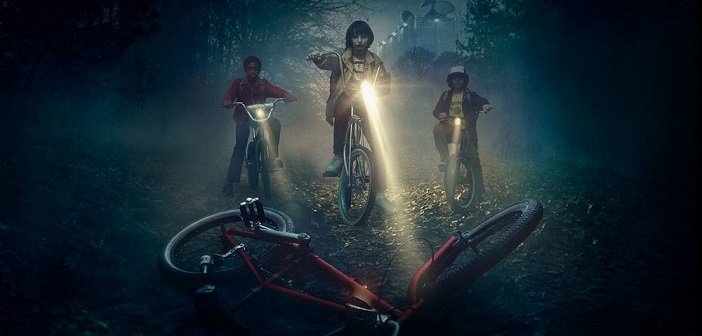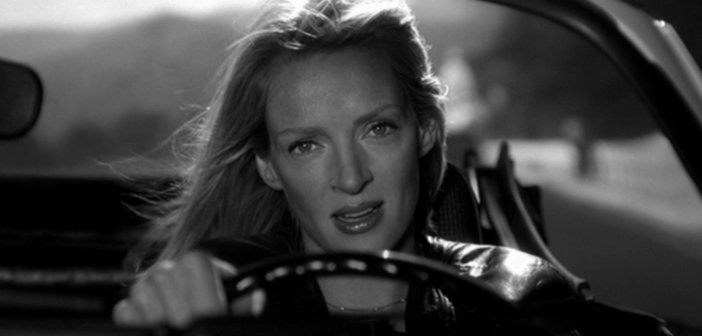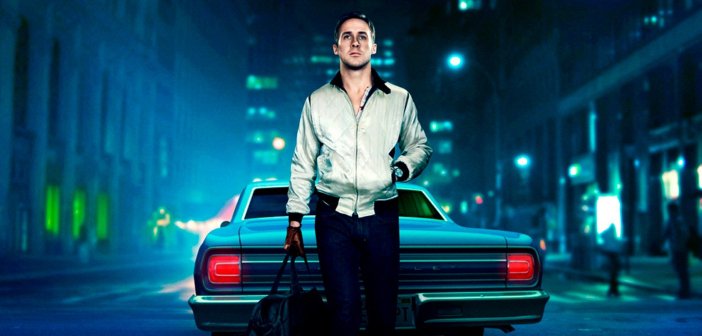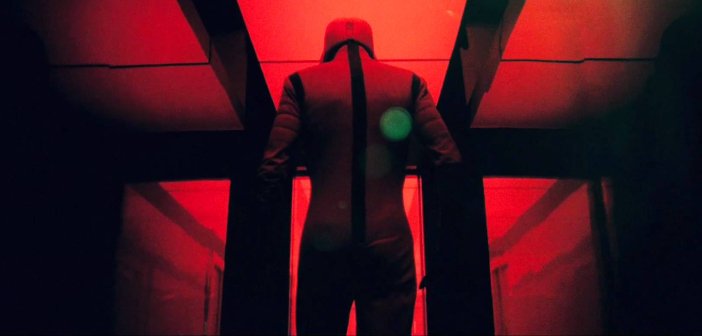Memory Tapes | The Strange Pervasiveness of Nostalgia in the 21st Century
Apart from a small minority of dissenting voices, Stranger Things has been the most popular television serial of the year. It’s certainly been the most talked about, and the show whose music and iconography have permeated the popular imagination to the greatest degree. Interestingly, the thing that many cite as the show’s greatest strength is what detractors call its fundamental weakness: Stranger Things is an example of fetishistic nostalgia. It isn’t simply set in the 1980s, but meticulously aspires to be emulate the look, tone and texture of something actually made in the 80s.
Ironically, it is precisely these loving time-capsule tendencies that make Stranger Things a quintessential product of the 21st century. In both cinema and music, a peculiar and relatively new type of nostalgia has permeated our culture to become one of its most recurrent features. Like the killer in an 80s slasher franchise, the past keeps coming back to haunt us.

A nostalgic tendency in film-makers is no new thing. If the 60s and 70s were characterised by a bold disruption of cinematic norms, it’s often been suggested that the generation that came to prominence in the late 70s and early 80s blockbuster era – Spielberg, Lucas, Carpenter – were characterised by a nostalgia for the cinema and culture of their childhoods. Star Wars revived the Flash Gordon comic strips and movie serials of the 30s (“the flotsam and jetsam from the period when I was twelve years old” in Lucas’ words), Close Encounters and E.T. looked back to the flying saucer B-pictures of the 50s, and John Carpenter’s cinema was heavily indebted to Howard Hawks.
Nevertheless, there is a clear difference between the ways in which those directors revisited their childhoods, and the nostalgias of the 21st century. The directors of the 80s revived popular forms in an idiom and visual language that was completely of their own time. Carpenter’s The Thing is as quintessentially a film of the 80s as Hawks’ The Thing from Another World was reflective of the technology and ethos of the 1950s. How did cultural nostalgia make the leap from re-imaging the past in a contemporary idiom to become a fully realised aesthetic in its own right?
21st century nostalgia found its first distinct avatar in Quentin Tarantino’s “Grindhouse” period beginning with Kill Bill Volume 1 (2003). Kill Bill announced its retro fetishism from the first frame, utilising a National Screen Service Feature Presentation card from the 60s, and the Shaw Brothers Studio’s Shawscope logo. This opening gesture suggested at once a nostalgic impulse, and perhaps a desire to create something with a paradoxical relationship to time: not a genuine artefact or relic, or a truly contemporary piece, but something which partakes of both to feel almost outside of time.

Whatever the relative merits of its individual segments, the Grindhouse double feature itself largely failed to capture the public imagination. Nevertheless, its overriding tendencies now seem peculiarly prescient. It was an attempt to capture the whole gestalt of a movie-going experience from the past, with all the artefacts, scratches and textures specific to that period lovingly (or fetishistic-ally) re-created. Viewed in hindsight, it was the first in a cycle of alternative genre films characterised by nostalgic fetishes, with a growing focus on the 80s: Ti West’s The House of the Devil (2009), Panos Cosmatos’ Beyond the Black Rainbow (2010) and Nicolas Winding Refn’s Drive (2011) being prominent examples.
The retro wave has been even more pervasive in music. The revival of various strains of 80s electronic music – particularly the hypnotic soundtrack sounds associated with Tangerine Dream and John Carpenter – is now close to lasting longer than the 80s itself. It feels at this point less like a nostalgia wave and more like a cultural wormhole opening up between the 80s and the early decades of the 21st century, creating a dreamlike fusion of the two periods.
What’s now labelled synthwave can be traced back to 2006/2007 direction. In France, a related cluster of club artists were combining a kind of romantic, opiated 80s aesthetic with more recent dance styles: Anoraak, David Grellier’s College and Valerie Collective, Kavinsky and others. Meanwhile in Portland, Oregon, Johnny Jewel established his Italians Do It Better label, heavily stepped in the Italo disco revival and soon-to-be ubiquitous John Carpenter influence. Nicolas Winding Refn’s Drive brought all these musical currents to wider awareness in 2011. The movie was in some respects a cinematic equivalent to the retro wave musical movement: less a revival and more a re-invention of the 80s, a creative re-orientation of period signifiers that feels simultaneously stepped in the past and thoroughly in the present tense.

With this in mind, we can see Stranger Things as the mainstream expression of a series of tendencies that have flourished until now in alternative culture. Retromania is persistently a controversial subject. For some commentators, art only has value when it pursues a kind of novelty, a futurism of the present instant, an opposition to the past. For these critics, the nostalgic tendency represents a dearth of originality, a gimmick borne out of cultural stasis.
This, however, misses the degree to which nostalgic and retro-based art can create new and distinct forms. Of the three retro-wave movies mentioned, it is worth noting that all three are fundamentally unlike the sources they build from. The House of the Devil meticulously recreates the ambience of a 80s horror movie you saw on VHS, but almost no 80s horror would have taken quite the same narrative approach. In stark contrast to its sources, West’s movie is a sparse, slow-burning exercise in atmosphere and suspense – an extended mediation on the power of build-up. Refn’s Drive riffed on various 80s templates – Mann’s Thief, Risky Business, John Hughes comedies – but remains very much its own thing, a continuation of the director’s exploration of conflicted masculinity through the medium of violent fairy-tale.
Beyond the Black Rainbow, perhaps my favourite of the memory cycle of films, has much in common plot-wise with Stranger Things, but its approach to the same material couldn’t be more different. The genesis of the movie goes back to when director Panos Cosmatos used to browse VHS covers of horror movies he was forbidden to watch as a child. He imagined his own version of the films, based on the imagery of the cassette boxes. Black Rainbow was thus an attempt to realise that personal, imaginary cinema as an actual film, an “imagining of an old film that doesn’t exist.” This is another example of how retro-wave movies step outside of their source time period – Black Rainbow combines memory and imagination to create an alternative 80s that never was. It adopts the forms of popular 80s cinema, but re-orients them in the manner of a dream into something new – cultural memory rendered as an art installation or hypnagogic trance.

The abundance of nostalgic culture in the 21st century is a peculiar phenomenon that will probably be the subject of future sociological analysis. In the post-war years of the 20th century, the world believed that the future would be another, better planet. The 21st century was itself an iconic signifier of that utopian dream – everything would be different in the new century. Now that we’ve actually gotten there, though, we find ourselves living in a future that has already been and gone. We live, not in the gleaming dream of the future, but in a world of austerity and radical uncertainty, an off-season resort with no guarantee of summer rejuvenation on the horizon.
It is thus unsurprising that the early 21st century should become haunted by the past, in the same way that the last century was haunted by the future. In music, how we imagined the future would be and the actual future we are living in have become intertwined. In cinema, the past has become a huge part of how we create alternative imaginative landscapes, in a way the future once was. In this sense, we can see nostalgia not simply as a throwback, but as a legitimate expression of how we experience the world today. Even a relatively straight exercise in nostalgia like Stranger Things exhibits greater creativity and originally than the nostalgia wave as it has afflicted commercial Hollywood film-making: memory as brand recognition and marketing, to be remade (endlessly) but never made anew.
Featured Image Credit

